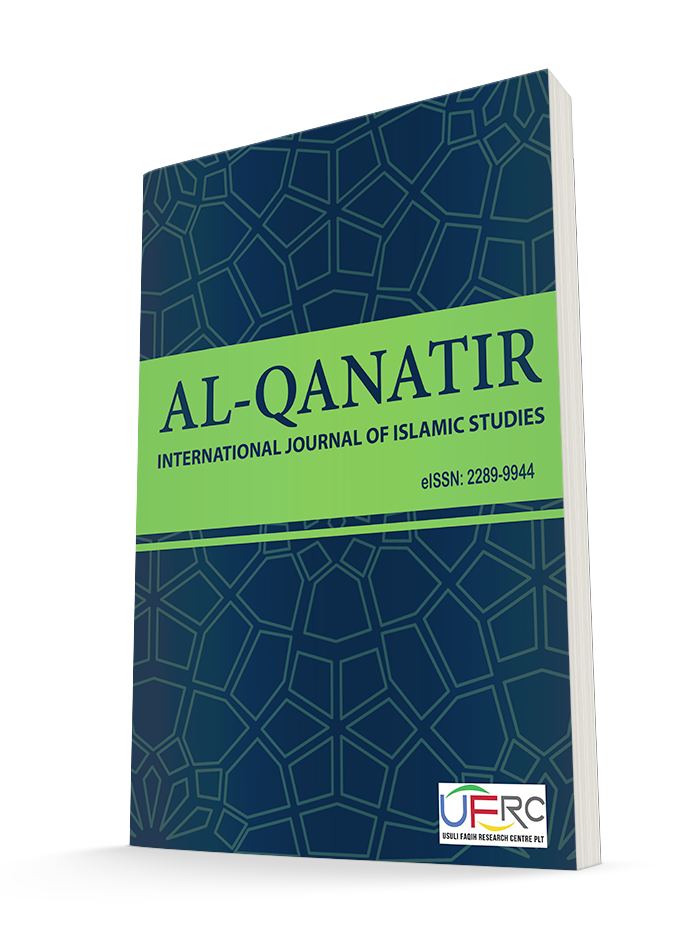Article

Current Practice Of Debt Recovery Methods In Islamic Banks In Malaysia
Al-Qanatir: International Journal of Islamic Studies vol. 13 no. 2 (Page 93-110)View in JFatwa
Auni Amirah Razman (Author)
Yasmin Hanani Mohd Safian (Author)
Abstract
Debt recovery is an essential activity either for Islamic banks or conventional banks in order to ensure the sustainability of the banks. The bad debt need to be managed properly or else the banks will experience problem with growing level of non-performing loan. One of the problems faced by the banks in collecting debt is defaulted debtor. Many have criticised and voice out their concern over non-ethical debt collection by Islamic banks. Therefore, the aim of this paper is to review the current practice of debt recovery methods in Islamic banks in Malaysia. This research employs the qualitative methodology utilizing content analysis technique. Primary data is collected from books and academic researches. The result shows that the authorities in Malaysia provided good methods and mechanisms for debt recovery in Islamic banks in Malaysia; in term of tools of recovery, procedures, laws and policy. However, still there is a lack in term of enforcement, due this situation, it has affected the debtor. Based on the findings of the study, the study recommended that the Islamic banks should enforce and improve the debt recovery practice according to the laws and policies prescribed.
References
Faleel Jamaldeen. 2012. Islamic Finance for Dummies. John Wiley & Sons, Inc. Canada pg 147- 162.
Journal
Amirullah Haji Hamzah & Razli Ramli. 2011. Islamic Banking Recovery Process. Kuala Lumpur.IBFIM
Ezani Yaakub, Mohamed Azam Mohamed Adil, Asmak Husin & others. 2014. A Revisit to the Practice of Late Payment Charges by Islamic Banks in Malaysia. Jurnal Pengurusan. 42(2014) 185-190.
Hsieh, H. F., & Shannon, S.E. 2005. Three Approaches to Qualitative Content Analysis. Qualitative Health Research.
Joni Tamkin Borhan. 2001. Sistem Perbankan Islam Di Malaysia: Sejarah Perkembangan, Prinsip Dan Amalannya. Jurnal Usuluddin, Bil 14, pg 150, 152.
Khanzode, V. V. 2007. Research Methodology: Techniques and Trends. New Delhi: APH Publishing Corporation
Md Ghani, N. A & Abdul Majed, M.K. 2013. Towards harmonisation of debt recovery activity in Banking to Shariah Compliant. International Conference on Business and Economic Research (4TH ICBER 2013) Isbn: 978-967-5705-10-6.
Mumtaz Hussain, Asghar Shahmoradi, Rima Turk. 2015. An Overview of Islamic Finance. International Monetary Fund. pg 6 - 8.
Sabri, M.F. 2014. Beban Hutang Isi Rumah: Isu Dan Penyelesaian, Presented at Seminar Beban Hutang Isirumah: Punca dan Penyelesaian, Kuala Lumpur, 2014. Kuala Lumpur, KL: Institusi Kefahaman Islam Malaysia (IKIM).
Seethaletchumy Thambiah, Hishamuddin Ismail & Uchenna Cyril Eze. 2011. Customer Awareness and Current Usage of Islamic Retail Banking Products and Services in Malaysia. Australian Journal of Basic and Applied Sciences, 5(10): 667-671.
Siti Norsaadah Kamaludin. 2013. Debt Recovery – Theory and Application in Malaysian Islamic Banking System. Faculty of Mualamat, Insaniah University College.
Yoong-Hon Lee, Magendran P. Palaniandy & Hui-Boon Tan. 2011. Transforming Bad Debt to Cash Flow. Banker’s Journal Malaysia. Issue 136. ISSN: 0126-9534.
Act
Islamic Financial Services Act (IFSA) 2013.
Bank and Financial Institution Act (BAFIA) Act 1989.
Internet
Hong Leong Islamic Bank. Personal Financing-i. https://www.hlisb.com.my/en/personali/consumer-financing-i/personal-financing-i/personal-financing-i.html (Retrieved on 3rd September 2018).
Hong Leong Islamic Bank. Auto Financing-i. https://www.hlisb.com.my/en/personali/consumer-financing-i/auto-financing-i/auto-financing-i.html (Retrieved on 3rd September 2018).
Hong Leong Islamic Bank. Property Financing-i. https://www.hlisb.com.my/en/personali/consumer-financing-i/property-financing-i/cm-flexi-property-financing-i.html (Retrieved on 3rd September 2018).
http://iimm.bnm.gov.my/index.php.
Ng Min Shen (2017, August 21). Growing The Islamic Banking Business. The Malaysian Reserve. Retrieved from: https://themalaysianreserve.com/2017/08/21/growingislamic-banking-business/.
Public Islamic Bank. Credit Card-i. https://www.publicislamicbank.com.my/PersonalBanking/Cards/Cards (Retrieved on 3rd September 2018).
Public Islamic Bank. BAE Personal Financing-i.
https://www.publicislamicbank.com.my/Personal-Banking/Financing/PersonalFinancing-i/BAE-Personal-Financing-i (Retrieved on 3rd September 2018).
Public Islamic Bank. AITAB Hire Purchase-i.
https://www.publicislamicbank.com.my/Personal-Banking/Financing/VehicleFinancing-i/AITAB-Hire-Purchase-i (Retrieved on 3rd September 2018).
Public Islamic Bank. ABBA House Financing-i.
https://www.publicislamicbank.com.my/Personal-Banking/Financing/HomeFinancing-i/ABBA-House-Financing-i (Retrieved on 3rd September 2018).
Al-Rajhi Bank. Personal Financing-i.
https://www.alrajhibank.com.my/page/personal/financing/personalfinancing/personal-financing---i (Retrieved on 3rd September 2018).
Al-Rajhi Bank. Automobile Financing-i.
https://www.alrajhibank.com.my/page/personal/financing/automobilefinancing/automobile-financing-i (Retrieved on 3rd September 2018).
Al-Rajhi Bank. Home Financing-i.
https://www.alrajhibank.com.my/page/personal/financing/propertyfinancing/home-financing (Retrieved on 3rd September 2018).
Syahril A. Kadir (2012, February 18). PPIM Bidas Bank Jual Nama ‘Perbankan Islam’ Untuk Kaut Untung! Persatuan Pengguna Islam Malaysia. Retrieved from: http://www.apastyle.org/learn/faqs/cite-newspaper.aspx.
Zuibaidah Isa & Hafiz Ismail (2017, April 24). Siapa sebenarnya ejen pengutip hutang? Sinar Online. Retrieved from http://www.sinarharian.com.my/rencana/siapasebenarnya-ejen-pengutip-hutang-1.664581.
Disclaimer
Opinions expressed in this article are the opinions of the author(s). Al-Qanatir: International Journal of Islamic Studies shall not be responsible or answerable for any loss, damage or liability etc. caused in relation to/arising out of the use of the content.
URL
Back View in JFatwa

